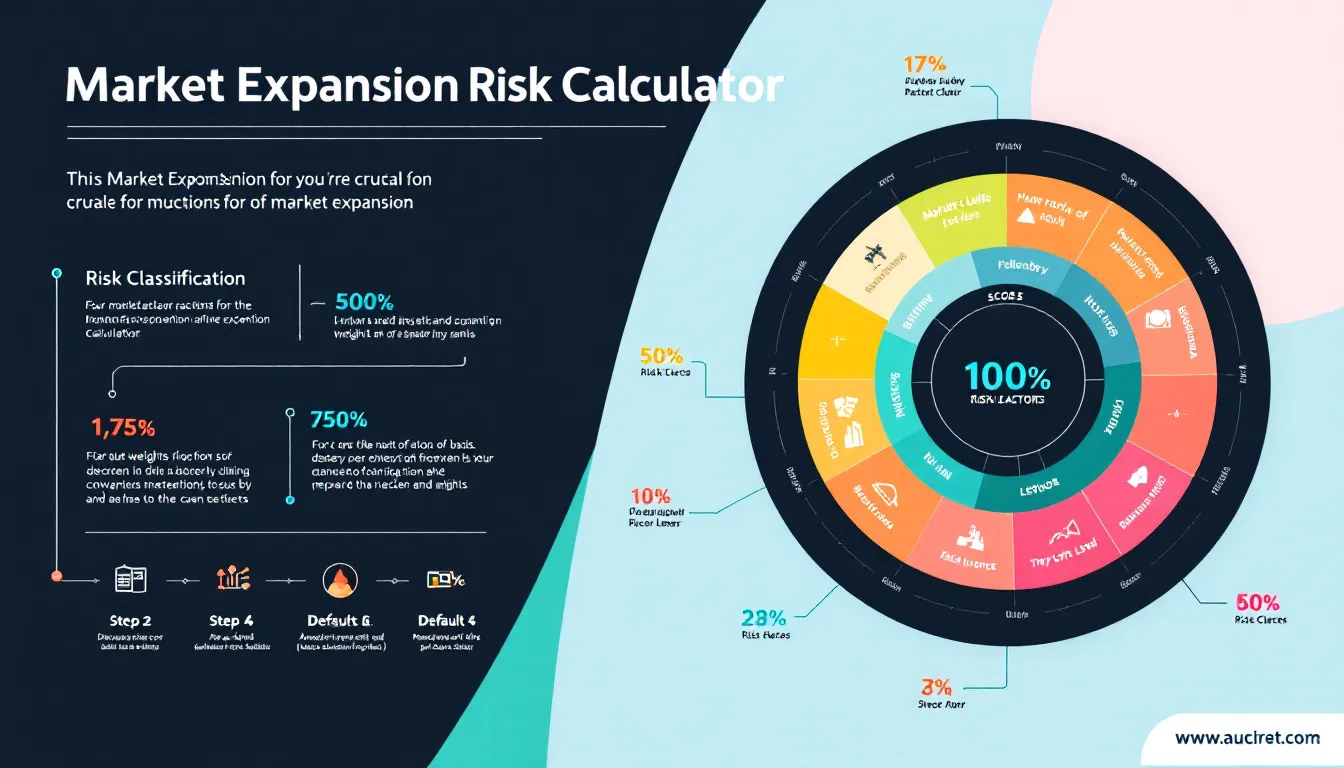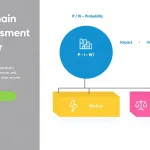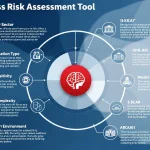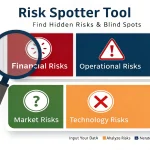Market Expansion Risk Calculator
Is this tool helpful?
How to Use the Market Expansion Risk Calculator Effectively
The Market Expansion Risk Calculator helps you evaluate potential risks when entering new markets. To get the most accurate insights, follow these steps carefully:
- Enter the Target Market Name: Provide the name of the market or region you intend to explore. For example, you might enter “Eastern Europe” or “Kenya”.
-
Rate Each Risk Factor: For every risk category, assign a score from 1 (Low Risk) to 5 (High Risk). Below are sample considerations:
- Political Risk: In a country with ongoing political unrest, consider a rating of 5. For a stable government, you might rate it 1 or 2.
- Economic Risk: An emerging market with fluctuating currency value may rate as 4, while a mature economy with steady growth could be rated as 2.
- Submit Your Ratings: Once all fields are completed, the tool calculates an overall risk score and categorizes the market as Low, Medium, or High Risk. It also displays a radar chart representing your risk distribution.
- Review the Recommendations: Focus on suggestions related to high-risk areas. These tips help you address challenges before expanding.
- Consider Industry-Specific Adjustments: While default weights reflect general importance, you can adapt risk factor significance based on your business sector or specific concerns.
What Is the Market Expansion Risk Calculator? Purpose and Benefits
The Market Expansion Risk Calculator is an online tool that quantifies the risks involved in expanding your business to new geographic markets. It simplifies complex risk factors into actionable scores, helping you decide where and how to grow wisely.
Key Features and Core Functions
- Comprehensive Risk Factors: Evaluates ten critical risks affecting market entry success.
- Weighted Risk Scoring: Assigns different importance levels to each risk factor for balanced assessment.
- Visual Risk Profile: Generates a radar chart to easily spot strengths and weaknesses across risks.
- Risk Classification: Sorts expansion opportunities into Low, Medium, or High Risk categories.
- Actionable Recommendations: Offers advice tailored to the highest risks you identify.
Benefits for Businesses and Market Strategists
- Improved Risk Insight: Understand diverse market risks in one consolidated framework.
- Objective Decision Support: Base your expansion plans on quantifiable data rather than gut feelings.
- Efficient Resource Allocation: Target investments where risk is highest to optimize impact.
- Sharpened Strategic Planning: Gain clear direction on which challenges need early attention.
- Clear Risk Communication: Share visually intuitive charts and summaries with your team and stakeholders.
Understanding the Risk Assessment Process and Methodology
Ten Essential Risk Factors Evaluated
- Political Risk
- Economic Risk
- Legal/Regulatory Risk
- Cultural Risk
- Technological Risk
- Competitive Risk
- Market Demand Risk
- Financial Risk
- Operational Risk
- Infrastructure Risk
How Risk Scores Are Calculated
Each risk factor receives a user-provided rating from 1 to 5. The calculator then normalizes these ratings using this formula:
$$ S_i = \frac{\text{Rating}_i – 1}{4} $$Where $S_i$ is the normalized score for risk factor $i$.
Combining Factors With Weightings
The overall risk score results from summing each normalized score multiplied by its respective weight:
$$ R_{\text{total}} = \sum_{i=1}^{10} W_i \times S_i $$Here, $W_i$ denotes the weight assigned to each risk factor.
Default Risk Factor Weights
- Political Risk: 0.10
- Economic Risk: 0.15
- Legal/Regulatory Risk: 0.10
- Cultural Risk: 0.10
- Technological Risk: 0.10
- Competitive Risk: 0.15
- Market Demand Risk: 0.20
- Financial Risk: 0.05
- Operational Risk: 0.05
- Infrastructure Risk: 0.05
Risk Level Classification
Based on $R_{text{total}}$, the expansion opportunity is classified as:
- Low Risk: $R_{text{total}} leq 0.33$
- Medium Risk: $0.33 < R_{text{total}} leq 0.66$
- High Risk: $R_{text{total}} > 0.66$
Practical Example: Calculating Market Expansion Risk
Imagine you plan to introduce your retail brand to Chile. After evaluating, you assign these ratings:
- Political Risk: 2
- Economic Risk: 3
- Legal/Regulatory Risk: 2
- Cultural Risk: 3
- Technological Risk: 2
- Competitive Risk: 4
- Market Demand Risk: 3
- Financial Risk: 2
- Operational Risk: 3
- Infrastructure Risk: 2
Converting ratings to normalized scores:
$$ \begin{align*} S_{\text{political}} &= \frac{2 – 1}{4} = 0.25 \\ S_{\text{economic}} &= \frac{3 – 1}{4} = 0.5 \\ S_{\text{legal}} &= 0.25 \\ S_{\text{cultural}} &= 0.5 \\ S_{\text{technological}} &= 0.25 \\ S_{\text{competitive}} &= 0.75 \\ S_{\text{marketDemand}} &= 0.5 \\ S_{\text{financial}} &= 0.25 \\ S_{\text{operational}} &= 0.5 \\ S_{\text{infrastructure}} &= 0.25 \\ \end{align*} $$Applying the default weights, the overall risk score calculates as:
$$ \begin{align*} R_{\text{total}} =\;& (0.10 \times 0.25) + (0.15 \times 0.5) + (0.10 \times 0.25) + (0.10 \times 0.5) + (0.10 \times 0.25) \\ &+ (0.15 \times 0.75) + (0.20 \times 0.5) + (0.05 \times 0.25) + (0.05 \times 0.5) + (0.05 \times 0.25) \\ = \;& 0.025 + 0.075 + 0.025 + 0.05 + 0.025 + 0.1125 + 0.1 + 0.0125 + 0.025 + 0.0125 \\ = \;& 0.4625 \end{align*} $$With a score of 0.46, Chile ranks as a Medium Risk market. You’d focus your efforts on competitive intensity and market demand risks first, following targeted recommendations.
Important Disclaimer
The calculations, results, and content provided by our tools are not guaranteed to be accurate, complete, or reliable. Users are responsible for verifying and interpreting the results. Our content and tools may contain errors, biases, or inconsistencies. Do not enter personal data, sensitive information, or personally identifiable information in our web forms or tools. Such data entry violates our terms of service and may result in unauthorized disclosure to third parties. We reserve the right to save inputs and outputs from our tools for the purposes of error debugging, bias identification, and performance improvement. External companies providing AI models used in our tools may also save and process data in accordance with their own policies. By using our tools, you consent to this data collection and processing. We reserve the right to limit the usage of our tools based on current usability factors.







